11 Best Ground Cover Plants to Stop Weeds from Growing
Ground covers are a great way to maintain a healthy garden and prevent weeds from taking over. They create a natural barrier that blocks sunlight, which weeds need to grow. Choosing the right ground cover can also add beauty and texture to your garden. Some varieties even help with moisture retention, making your garden more drought-resistant. The right ground cover can save you time and effort in garden maintenance.
This post may contain affiliate links, which helps keep this content free. Please read our disclosure for more info.
Creeping Thyme
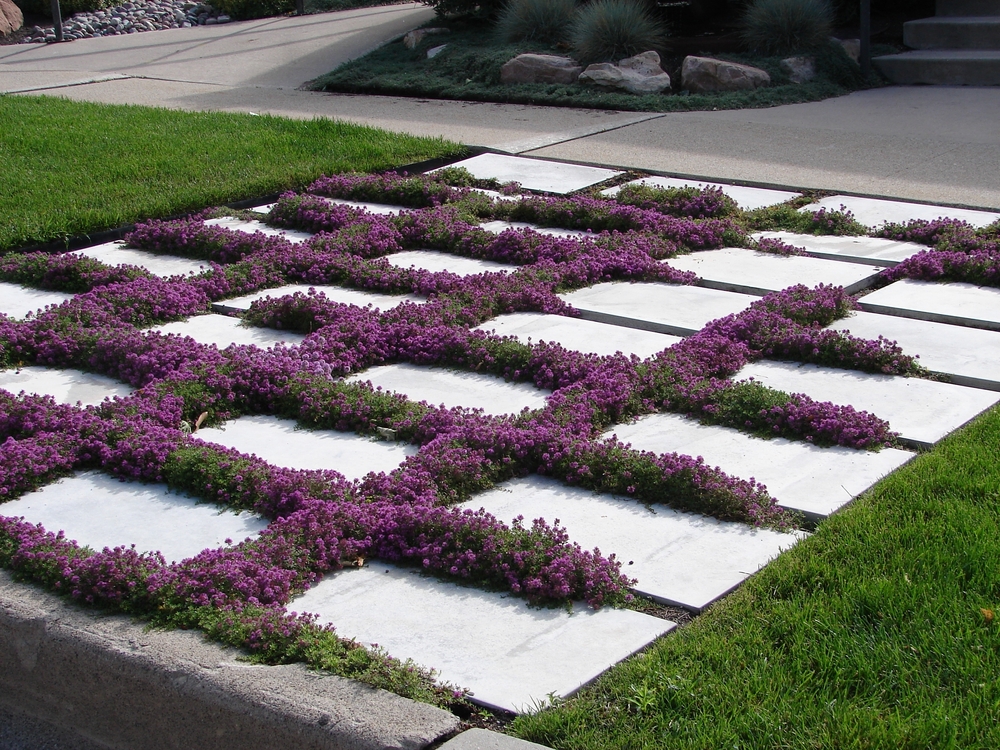
Creeping Thyme is an excellent ground cover for preventing weeds due to its dense, mat-like growth. It forms a thick carpet that smothers weeds, making it an ideal choice for sunny areas. Creeping Thyme typically grows in the spring and thrives in well-drained soil with full sun exposure. To care for it, trim back the plants after flowering to keep them neat and encourage new growth.
Creeping Thyme also produces small, fragrant flowers in early summer, attracting pollinators. It is drought-tolerant and can withstand light foot traffic, making it perfect for pathways or between stepping stones. This hardy plant requires minimal water once established. Its low maintenance and beautiful, fragrant blossoms make it a popular choice for gardeners.
Pachysandra
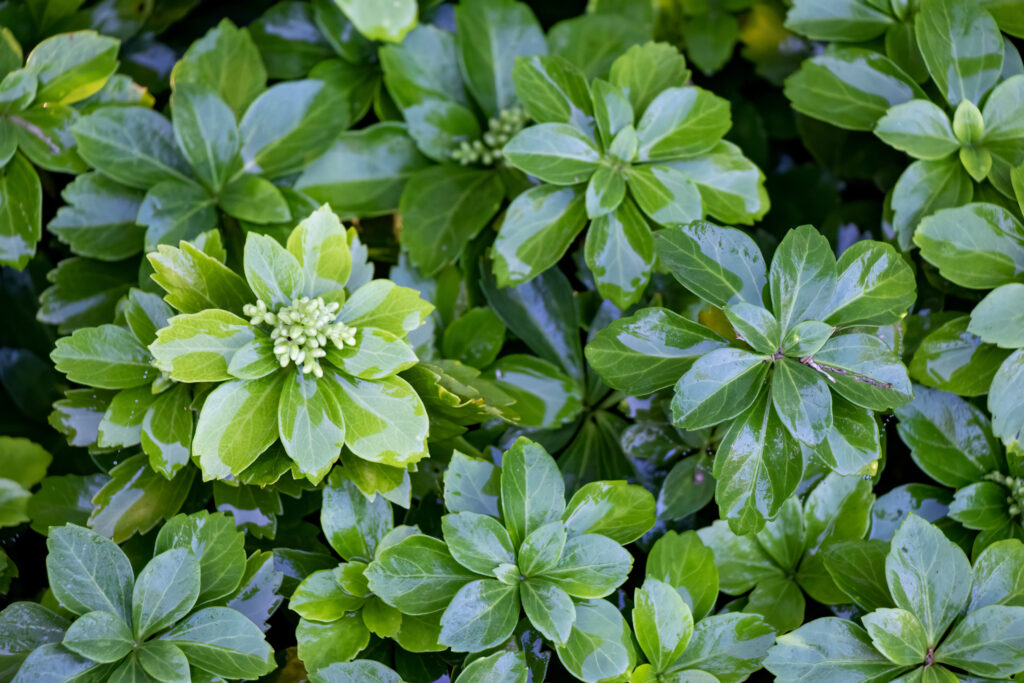
Pachysandra is a low-growing evergreen ground cover that effectively prevents weed growth by covering the soil. It thrives in partial to full shade and grows well in moist, well-drained soil. Pachysandra grows in spring and continues to spread through the growing season, making it a great choice for shaded areas. To care for it, ensure it receives consistent moisture, especially in the first year after planting.
This ground cover forms a dense, lush carpet that helps block sunlight from reaching weed seeds. Pachysandra is a slow-grower, but once established, it requires little maintenance. Its attractive, glossy green leaves provide year-round coverage, and it can tolerate a variety of soil types. It is a perfect option for shady, hard-to-maintain areas.
Creeping Jenny

Creeping Jenny is a fast-growing ground cover with vibrant green leaves that turn yellow in the fall. It is effective at preventing weeds due to its dense growth habit, which smothers unwanted plants. Creeping Jenny typically grows in the spring and spreads rapidly, making it a great choice for both sun and partial shade. Care for it by cutting back any overgrowth in early spring and watering regularly.
Creeping Jenny thrives in moist, well-drained soil and can tolerate some drought once established. It is ideal for covering large areas, including slopes or garden beds, and it will quickly fill in empty spaces. It also produces small, cup-shaped yellow flowers in early summer. This plant is low-maintenance and spreads quickly, making it effective at suppressing weeds.
Ajuga (Bugleweed)
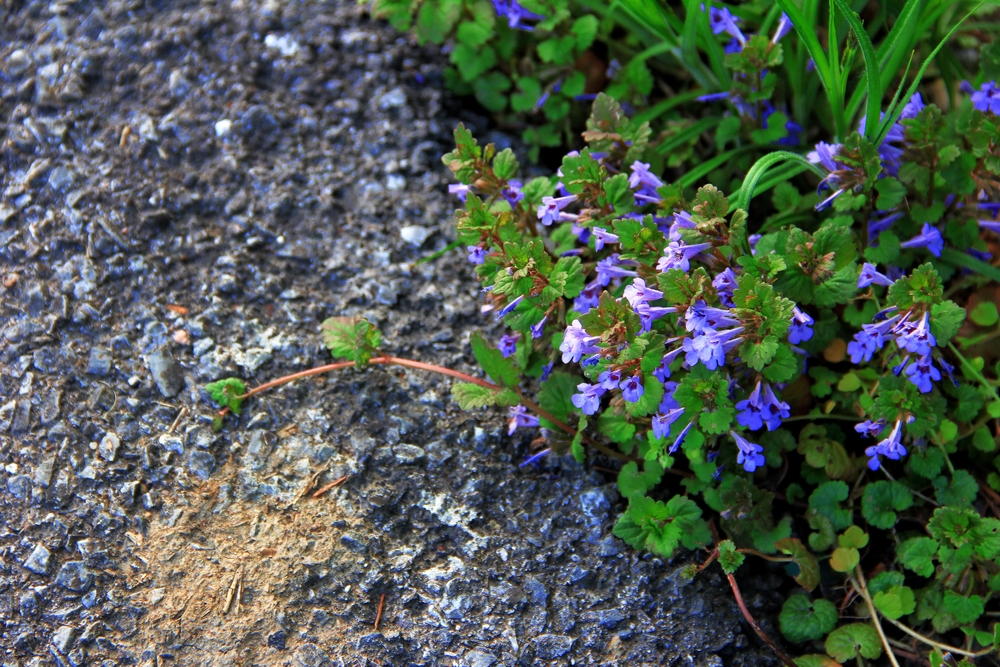
Ajuga is a perennial ground cover that grows quickly to form a dense mat, preventing weed growth. It typically grows in spring and prefers moist, well-drained soil in partial to full shade. Ajuga is easy to care for; it requires regular watering in the first year, but it becomes drought-tolerant once established. Trim back spent flowers to maintain its compact form.
This plant features attractive foliage that can vary in color, including shades of purple, bronze, and green. Ajuga also produces spikes of blue or purple flowers in early spring. Its dense foliage makes it a natural weed suppressant, especially in shady areas where other plants struggle to grow. Ajuga is a great choice for ground cover beneath trees or along garden borders.
Sedum (Stonecrop)
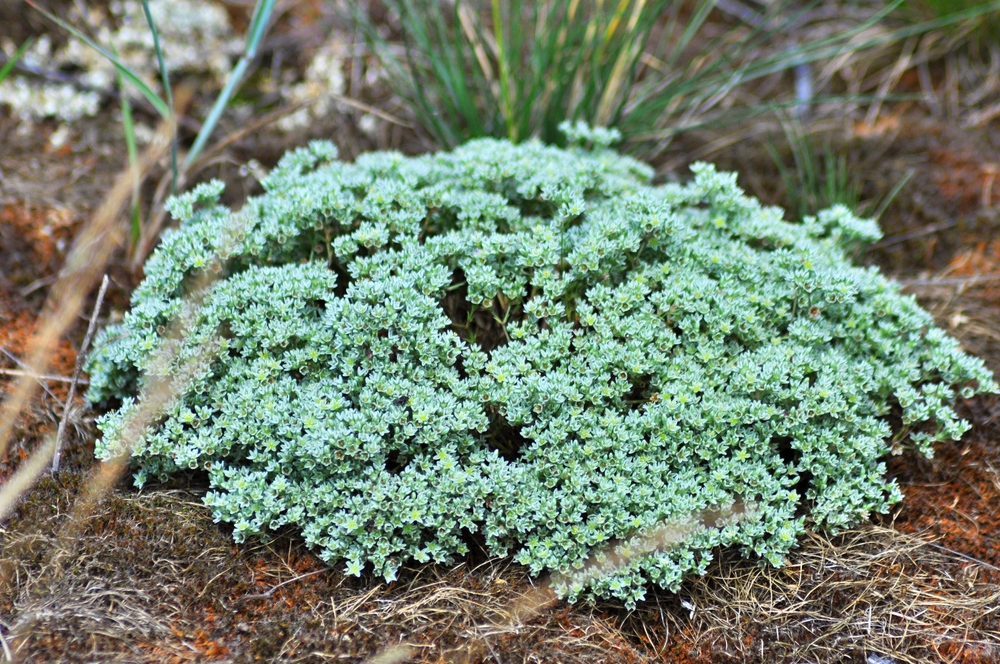
Sedum is a drought-tolerant ground cover that works well in sunny areas, suppressing weed growth with its thick, fleshy foliage. It typically grows in late spring to summer and thrives in well-drained soil. Sedum is easy to care for and requires minimal watering once established. Simply trim back any leggy growth to maintain its compact form.
This hardy plant produces clusters of small, star-shaped flowers in late summer, attracting pollinators to the garden. Sedum is known for its ability to withstand dry conditions and poor soil, making it an excellent choice for xeriscaping or areas with little irrigation. Its dense growth habit helps prevent weed establishment. Sedum also provides year-round interest with its foliage and flowers.
Clover (White Clover)

White Clover is a fast-growing, low-maintenance ground cover that helps prevent weeds by forming a dense carpet. It thrives in both full sun and partial shade and grows well in moderately fertile, well-drained soil. White Clover grows best in spring and early summer, but it may continue to spread throughout the growing season. Care for it by watering regularly and mowing it occasionally to maintain a tidy appearance.
White Clover fixes nitrogen in the soil, improving soil health while providing natural weed control. It produces small white flowers that attract bees and other pollinators. It is a low-maintenance ground cover that helps prevent erosion and adds a lush, green look to lawns or garden beds. Its rapid growth makes it a great choice for large areas needing weed control.
Liriope (Lilyturf)
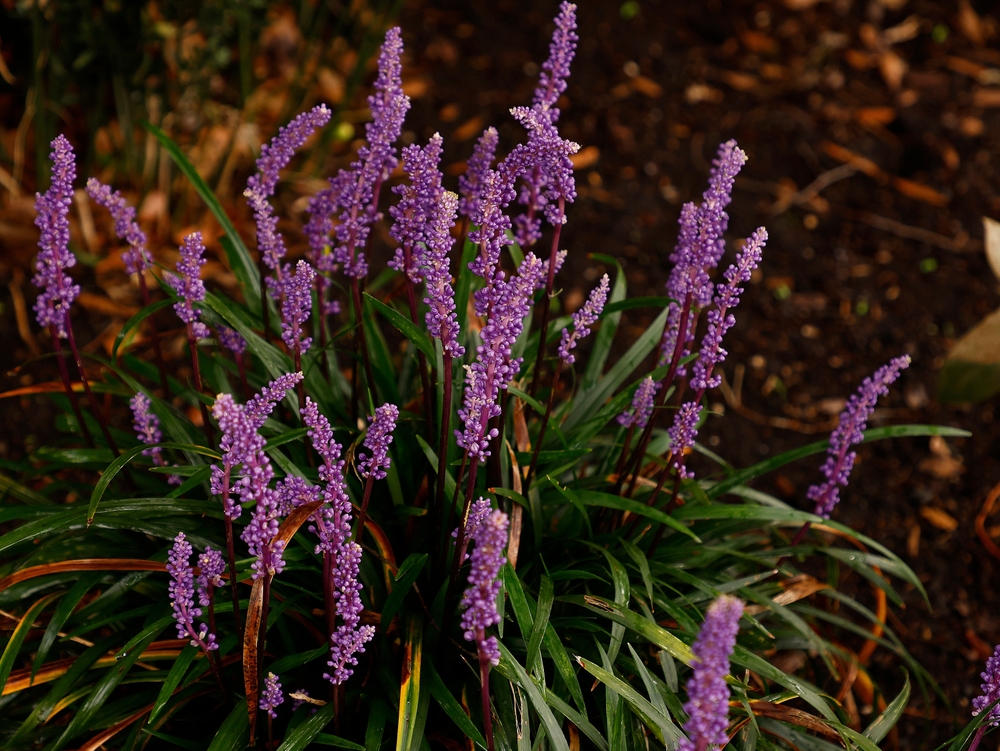
Liriope is a grass-like ground cover that effectively blocks weeds with its dense, clumping growth habit. It grows best in partial to full shade and moist, well-drained soil, although it can tolerate some sun. Liriope grows in spring and summer and spreads gradually, forming a solid mat. To care for it, trim the foliage back in early spring to remove any dead growth and encourage fresh shoots.
Liriope is an excellent choice for shaded areas or around tree roots, where other plants may struggle to thrive. It produces spikes of small, lavender flowers in late summer, which are followed by dark purple berries. Its ability to spread without becoming invasive makes it a top choice for weed suppression. Liriope is hardy and low-maintenance once established.
Sweet Woodruff
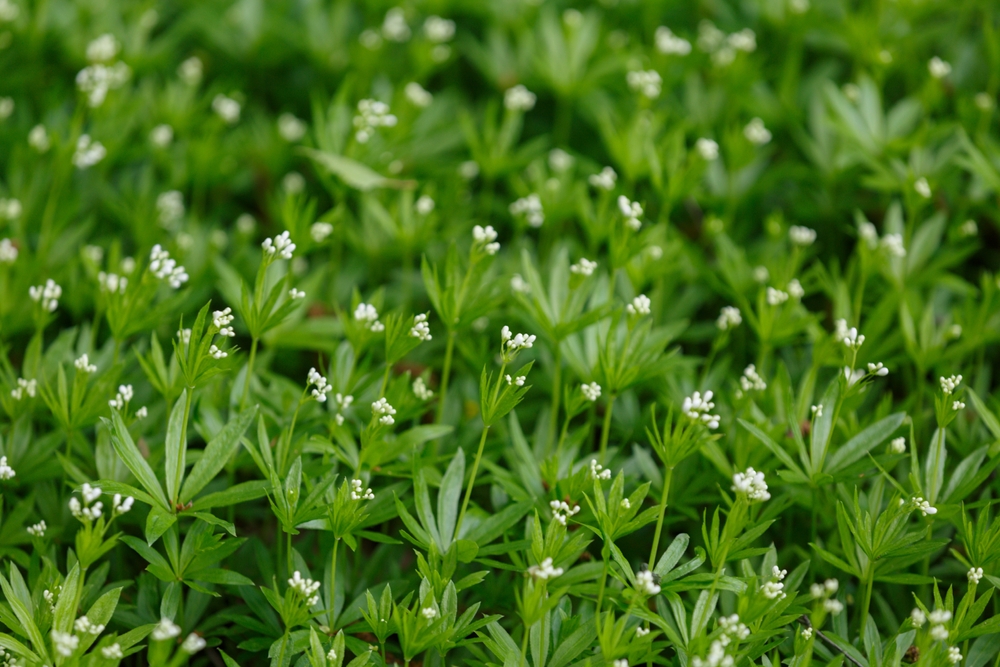
Sweet Woodruff is a low-growing, aromatic ground cover that thrives in shaded areas and helps suppress weeds with its dense growth. It grows best in moist, well-drained soil and prefers partial to full shade. Sweet Woodruff typically grows in spring, forming a carpet of small, star-shaped leaves and fragrant white flowers in early summer. It requires minimal care, but it benefits from occasional watering during dry periods.
This perennial is ideal for areas with limited sunlight, such as beneath trees or along shaded garden borders. Its dense foliage smothers weeds and keeps the soil moist, making it an excellent ground cover for woodland gardens. Sweet Woodruff also emits a pleasant scent when the leaves are crushed. It spreads gradually, forming a lovely, fragrant carpet of greenery.
Hostas

Hostas are well-known shade-loving plants that make excellent ground covers, effectively blocking weeds with their broad, lush leaves. They grow best in moist, rich, well-drained soil and prefer partial to full shade. Hostas typically begin growing in early spring and thrive throughout the summer, providing a dense ground cover. Care for them by keeping the soil consistently moist and removing dead leaves in the fall.
Hostas come in various colors and leaf patterns, adding texture and variety to shaded garden spaces. They are particularly effective at suppressing weeds in areas with limited sunlight. In late summer, many hostas produce tall flower spikes with fragrant blooms. Their dense foliage forms an effective barrier against weed growth and provides year-round interest.
Vinca Minor (Periwinkle)
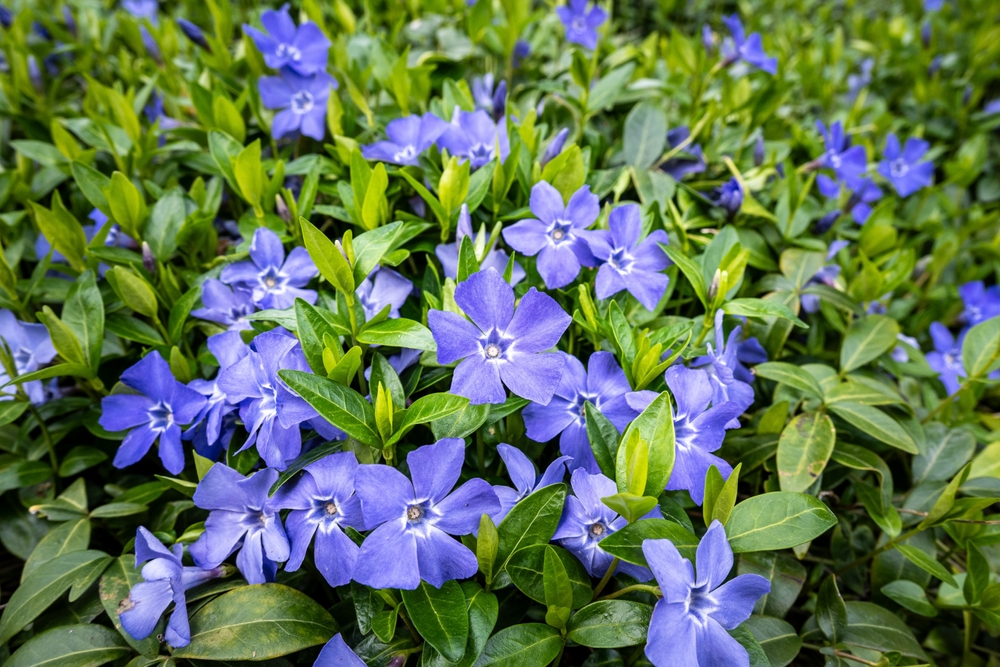
Vinca Minor is an evergreen ground cover known for its ability to smother weeds and grow well in both sun and shade. It grows in early spring and spreads quickly, forming a dense carpet of green leaves. The plant produces lovely purple or blue flowers in the spring and continues to spread throughout the year. To care for it, trim back any overgrowth in late winter and water regularly in dry conditions.
Vinca Minor is ideal for planting under trees, along shaded walkways, or in areas with poor soil. Its trailing vines form a thick mat that blocks sunlight from reaching weed seeds. In addition to its weed-blocking properties, it adds color to the garden with its vibrant flowers. Vinca Minor requires minimal maintenance and is highly effective for covering large areas.
Ground Morning Glory
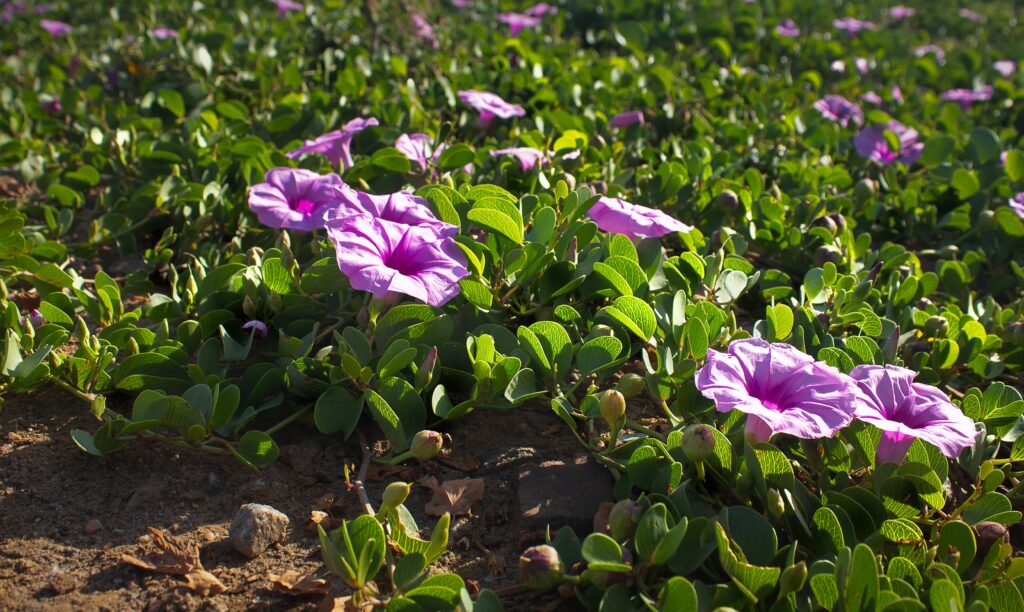
Ground Morning Glory is a fast-growing ground cover that forms a dense mat, making it effective at suppressing weeds. It grows best in full sun and well-drained soil and is known for its vibrant, funnel-shaped flowers that bloom in late spring to summer. Ground Morning Glory typically spreads rapidly and requires minimal care once established. To keep it under control, trim back the vines to prevent it from becoming too invasive.
This ground cover is great for filling large areas quickly, especially in sunny, open spaces. Its vibrant flowers attract pollinators, adding beauty to your garden. Ground Morning Glory can be used as a natural weed barrier on slopes or in between other plants. Its dense foliage ensures that weeds have little chance to thrive beneath it.
A well-chosen ground cover is a simple yet effective way to keep weeds at bay in your garden. These plants work hard to protect your soil and reduce the need for constant weeding.
This article originally appeared on Avocadu.
